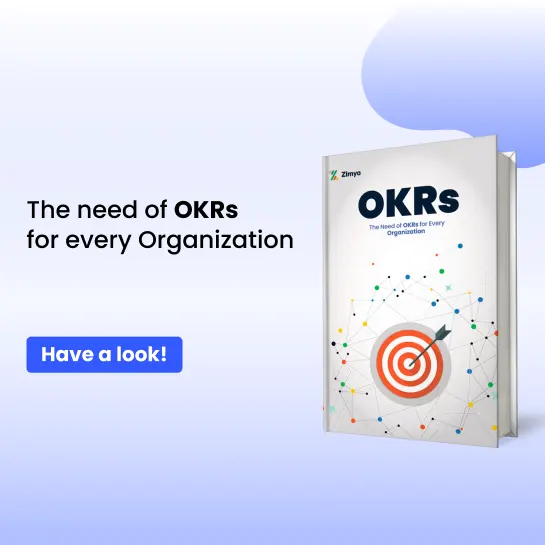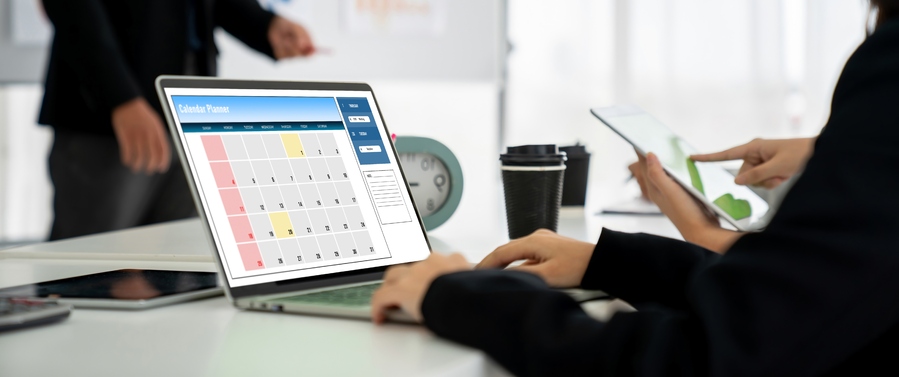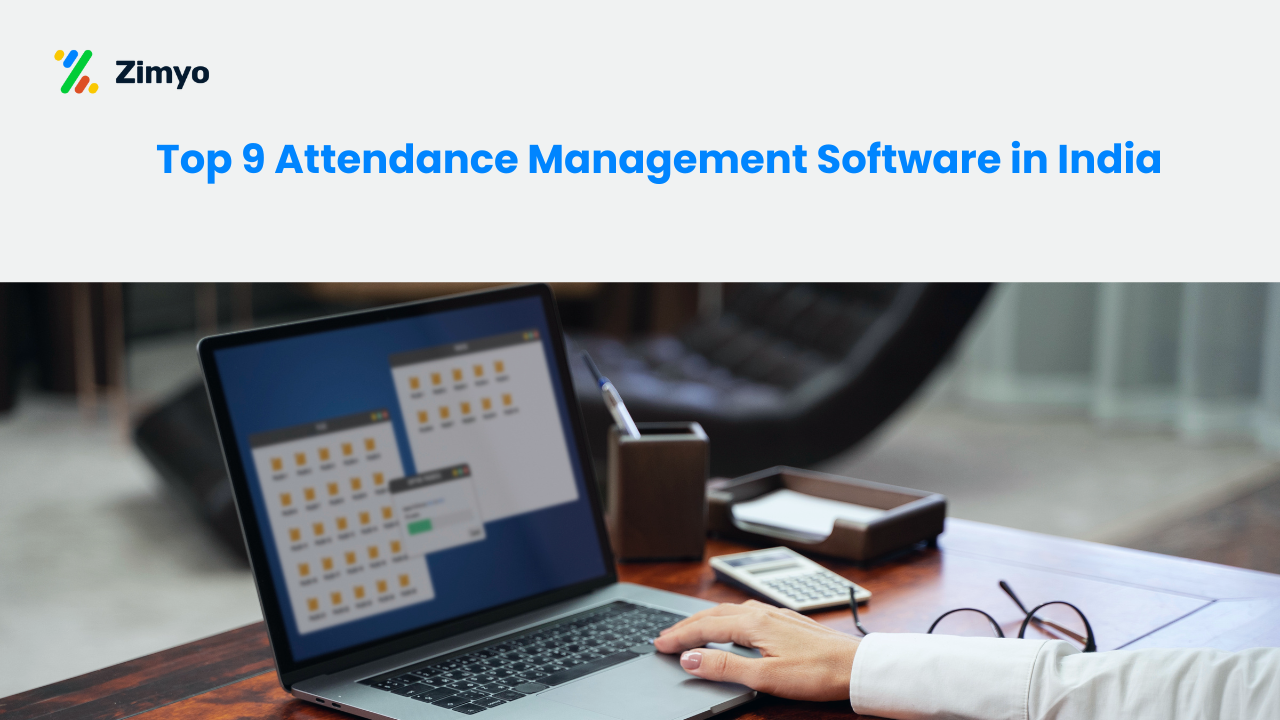Employee attendance has been the biggest challenge for organizations all the time. From register books to biometric devices, companies have experimented with various ways to mark attendance precisely. But in the fast-paced world of the present era, when employees are based across locations, meet clients, or work in the field, such systems do not prove effective enough.
This is where a GPS Based Attendance System becomes helpful. By merging the attendance management system with GPS technology, firms can monitor employee working hours accurately, regardless of where they are working from. It provides flexibility to employees, eliminates time theft, and guarantees end-to-end transparency.
In this blog, we’ll explore what a GPS-based attendance system is, how it works, its must-have features, best practices for implementation, benefits of geofencing attendance, and why Zimyo is the right choice for your organization.
What is a GPS-Based Attendance System?
A GPS Based Attendance System is a contemporary system that enables companies to monitor employee attendance with the use of GPS technology. In contrast to the conventional practices like manual registers, punch cards, or even biometric machines, this system makes use of an employee’s smartphone and geographical location to mark attendance.
When the employees check in using a mobile attendance app, the system also tracks their current location. This verifies that the employee is indeed at the right workplace, client location, or geofenced area before accepting the check-in.
This system is particularly beneficial for:
- Field staff like sales executives, delivery executives, and service engineers.
- Remote workers working from home or co-working spaces.
- Organizations with several offices located in various cities.
In brief, a GPS attendance system simplifies attendance, making it precise and tamper-proof for employees as well as employers.
How Does GPS Attendance Tracking Work?
A GPS Based Attendance System is designed to ensure that attendance tracking is seamless and transparent for both the employer and employee. Rather than using physical registers or biometric devices, it leverages location-based technology to track attendance in real time. Let’s explain how it really works:
1. App Installation and Setup
Employees first download the company’s official mobile attendance application on their phones. The application is light-weighted, easy to use, and operates both on Android and iOS. After the installation, employees login using their specific credentials issued by the HR or admin team.
2. Location Permissions
In order to capture attendance, the application needs access to the GPS of the smartphone. This allows the system to authenticate where the employee happens to be at the time of check-out or check-in. Without GPS, the attendance will not be captured, and this helps prevent abuse.
3. Check-In and Check-Out Process
Workers just open the app and touch the “Check-in” button when beginning their workday and “Check-out” upon concluding. The system automatically records both the time and the place of the worker.
4. Geofencing Integration
To avoid proxy or fake attendance, organizations create geofencing areas, virtual perimeters around a particular location like an office, warehouse, or customer location. The app only registers attendance if the worker is within this perimeter. If they attempt to punch attendance outside the assigned area, the system denies it.
5. Real-Time Sync with HR System
After an employee indicates their attendance, the information gets automatically synchronized into the company’s attendance management system. This is then accessible to HR managers and supervisors via real-time dashboards and reports.
6. Payroll Integration
Because the system is integrated into payroll software, all attendance records – working hours, late logins, leaves, and overtime – directly feed into payroll. This minimizes human errors and pays employees accurately.
Real-World Example
Consider a sales executive who spent the day on client visits. Rather than having to drive back to the office just to clock a biometric machine, they can check in remotely from the client’s office. In the same way, a delivery agent can sign in at the warehouse before beginning their route. This is flexible attendance yet still accurate.
Key Features Every GPS Attendance System Should Have
All attendance software is not equal when it comes to efficiency. A good GPS Based Attendance System should possess a combination of crucial features that make it easy for employees and robust for HR teams. Here are the key features to watch out for:
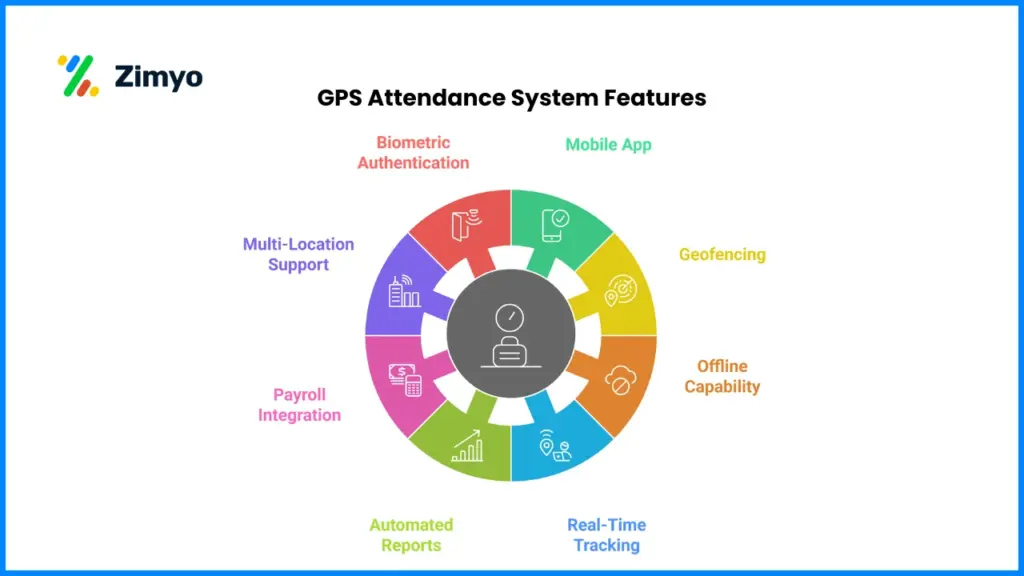
1. Mobile Attendance App
A mobile attendance application is the core of the system. It must be easy, fast, and convenient so that employees can mark their attendance or leave with a single tap. Compatibility with both Android and iOS guarantees access to all.
2. Geofencing Attendance
With a geofencing attendance system, businesses are able to create virtual boundaries around offices. Employees may only mark their presence when they are within these zones, meaning attendance is accurately location-based and proxy check-ins are avoided.
3. Offline Attendance Capability
Not all employees are in locations with good internet connectivity. A solid system enables employees to mark attendance offline and save the data temporarily on the device. After the internet is restored, the data is synced automatically.
4. Real-Time Tracking and Monitoring
Supervisors and HR managers can see live locations of employees during work hours. This comes in handy for field operations, logistics, and service personnel where location tracking is critical to efficiency of operations.
5. Automated Reports & Analytics
The software should be capable of generating useful reports like:
- Day and monthly attendance digest
- Overtime
- Late entry and early departure
- Absenteeism patterns
These reports assist HR and management in making fact-based decisions.
6. Payroll Integration
Attendance and payroll are two sides of the same coin. With payroll integration, businesses can easily compute working hours, overtime, and leaves and ensure that employees receive their dues on time and as per their labor. This reduces salary conflicts and increases employee satisfaction.
7. Multi-Location & Shift Support
For organizations that have several offices or teams with staggered working hours, the software must accommodate multiple geofenced locations and shift times. This way, regardless of where or when workers are working, attendance is correctly tracked every time.
8. Biometric & Two-Factor Authentication (Optional)
For enterprises that require additional security, the GPS system can also be integrated with biometric attendance. Double authentication guarantees 100% accuracy, particularly in industries with high compliance requirements.
Best Practices for Implementing Geofencing Technology
A geofencing attendance system has the potential to entirely revolutionize the way businesses handle employee attendance. But as with every technology, its success revolves around how well it’s being implemented. Below are some best practices to ensure that geofencing flows well in your organization:
1. Define Clear and Precise Geofencing Zones
The first step is to define the right virtual boundaries. Whether it’s your office, a client’s site, or a warehouse, make sure the GPS coordinates are precise. A poorly defined zone can lead to errors where employees are unable to check in even when they are on-site.
2. Start with a Pilot Run
Rather than rolling it out to the whole company, start with a pilot group of staff. This will identify any technical problems or user issues. Having perfected the system, you can then roll it out to the whole organization.
3. Communicate with Employees Clearly
Transparency is essential in the use of any attendance technology. Inform employees why the system is being implemented, what information it gathers, and how it works to their advantage. This fosters trust and lowers resistance to change.
4. Ensure Compatibility Across Devices
Because staff members will be utilizing a cell phone attendance app, ensure that it is compatible with both Android and iOS devices. App updates on a regular basis and compatibility with various versions will make it easy for all to use.
5. Train Employees Properly
Short training really works. Demonstrate how to log in, activate GPS, check-in, and check-out. Treat frequent issues like battery life or privacy so that they get accustomed to the system.
6. Design Flexible Rules for Various Teams
Employees are not always the same. Office workers may have to do with a single static geofence, but field teams might need more than one. Remote workers might even be required to have flexibility in marking themselves as present from home. Make the rules according to varying jobs and work patterns.
7. Regular Monitoring and Optimization
Monitor the reports and trends produced by the attendance management system. In case the employees are experiencing repeated check-in problems at specific points, modify the geofence. Monitor regularly to ensure the system remains effective and consistent.
8. Integrate with Company Policies
Technology is most effective when backed by solid policies. Integrate your geofencing system with HR policies for attendance, shifts, and leaves. This provides an even playing field for all workers to adhere to.
Using Geofencing to Simplify Employee Attendance Tracking
One of the best benefits of a geofencing attendance system is how it streamlines attendance monitoring for all. With geofencing, attendance can only be taken when an employee is physically inside the defined virtual perimeter. This eliminates proxy attendance and offers guaranteed location accuracy.
Geofencing examples in monitoring attendance:
- A delivery courier checks in at the warehouse before commencing their route.
- A sales executive punches attendance directly at a customer site.
- A remote employee marks attendance from home or a co-working area.
- A healthcare professional punches attendance at hospitals or clinics.
Advantages of geofencing for various stakeholders:
- For HR departments: No paperwork, less error, and real-time reports.
- For employees: No waiting in queues at biometric devices or fear of missed punch-ins.
- For organizations: Saves money on hardware, avoids time theft, and maintains compliance with company policies.
Overall, geofencing makes attendance more efficient, accurate, and convenient.
Top Benefits of Geofencing for Employee Attendance
Implementing a geofencing attendance system has many advantages for organizations and employees alike. Below are some of the most effective benefits:
Accurate and Reliable Records
Because check-in can happen only within a geofenced area, there is no possibility of false or proxy check-ins. This keeps the attendance logs accurate.
Increased Transparency
The employees are aware that their working hours are recorded without bias, and the employers can rely on the accuracy of the information. This minimizes disputes regarding attendance or wages.
Flexibility for Different Work Models
Whether office workers, field employees, or telecommuters, geofencing accommodates any kind of work setup. Organizations no longer have to invest in multiple systems for different groups.
Cost-Effective Solution
Conventional biometric systems involve machines, hardware maintenance, and installation in every office. With GPS and geofencing, businesses cut infrastructure and hardware expenses.
Improved Efficiency and Productivity
HR is no longer required to sort through attendance sheets manually. Automated reports conserve time and enable HR personnel to concentrate on key tasks.
Improved Accuracy in Payroll
Since attendance is integrated with payroll, workers are compensated accurately for the time they work, making errors and disgruntlement a thing of the past.
Compliance Improved
Attendance legislation and company policies are more easily enforced with a system that offers digital records and time-stamped information.
Simply put, geofencing puts everyone in a win-win position: workers have flexibility, and business owners have reliability.
Why Choose Zimyo’s Attendance Management System
In selecting an effective attendance management system, Zimyo is the best companion for businesses of any scale. Here is why:
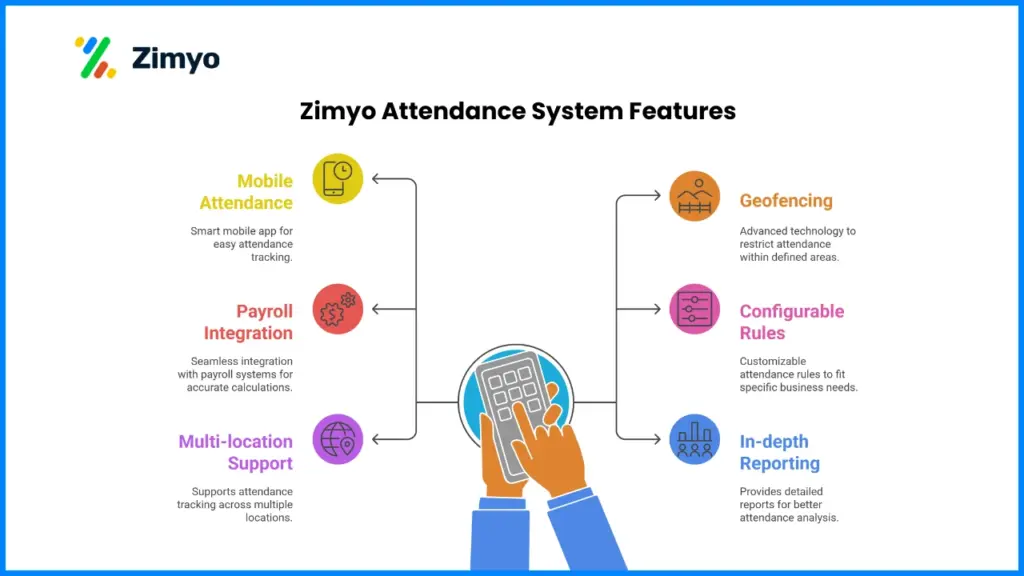
- Smart Mobile Attendance App
Employees can easily check in and check out using Zimyo’s mobile attendance app, created with a seamless user experience.
- Advanced Geofencing Technology
Attendance can only be recorded inside designated geofenced locations, maintaining accuracy and avoiding abuse.
- Seamless Payroll Integration
Attendance information is directly transferred into payroll, eliminating manual salary calculations and errors.
- Configurable Attendance Rules
Establish adaptable rules for shifts, tardiness, overtime, or remote employees to align with your firm’s policies.
- Multi-location Support
From one or several offices throughout the nation, Zimyo makes it easy to track attendance.
- In-depth Reporting
Easily create real-time reports on absenteeism, lateness, and overtime with a click of a button.
With Zimyo’s attendance software, not only do organizations track attendance, they also enhance efficiency, reduce costs, and promote open workplace culture.
Conclusion
A GPS-based attendance system is no longer a “nice-to-have”, it’s a must-have for businesses today with remote employees, on-field staff, or a blended workforce. By integrating GPS tracking and geofencing attendance tech, companies can leave outdated methods such as manual registers or spurious biometric attendance behind.
These kinds of systems introduce transparency, precision, and effectiveness to the whole process of attendance. Employers get live visibility into the movement of employees, and the employees experience the convenience of marking attendance easily from a mobile attendance app.
Above all, adopting an intelligent solution such as Zimyo’s Attendance Management System enables organizations to transcend mere hour-tracking. It promotes fairness, trust, and productivity by allowing workers to concentrate on their jobs rather than concern themselves with attendance adherence.
Simply put, a GPS-based attendance system is not merely about monitoring, it’s about empowering your employees and optimizing HR functions for a workplace of the future.
FAQs
What is a GPS-based attendance system?
Zimyo’s GPS-based attendance system allows employees to mark their attendance through location tracking. It uses geofencing to ensure check-ins and check-outs happen only within predefined work zones, making attendance more accurate and transparent.
How to track employee GPS?
Zimyo helps track employee GPS through its mobile attendance app. Employers can monitor location-based check-ins in real time, ensuring accountability for on-site, remote, and field staff.
What is a GPS monitoring system?
A GPS monitoring system like Zimyo enables businesses to track employee movements, verify work locations, and manage mobile or field-based teams efficiently using real-time location data.
How to create an attendance tracking system?
With Zimyo, you don’t need to build from scratch. Its ready-to-use attendance management system integrates GPS, geofencing, and automated reports, helping organizations set up reliable attendance tracking instantly.

